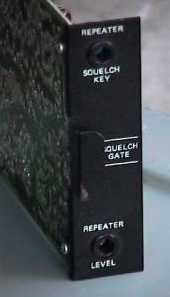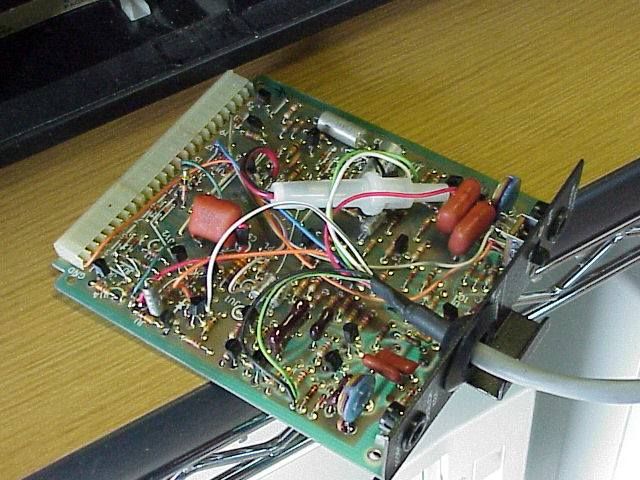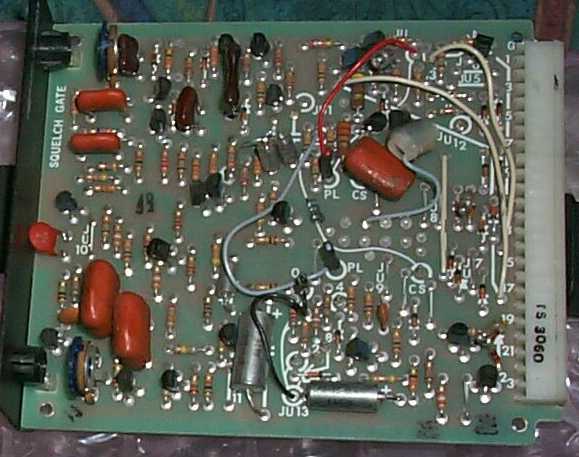



If you downloaded the MSR-2000 to External Repeater Controller file package between March
2004 and January 22, 2005, chances are you received a copy of the original 1998 conversion
package. This problem occurred when we moved the original sonic web server to its current
location under the radiowrench.com web domain. The original 1998 text was updated in July
2003, where many improvements and error corrections were completed.
Please check the date of any previously downloaded copies of the MSR-2000 to External Repeater
Controller package you may already have. Simply replace any previous copies with the now Jan/Feb
2005-updated package available as the same named downloadable sqlgate.zip file package.
The original sqlgate.zip file package contained both plain text and Word-Perfect "wpd" file
formats. We have replaced the Word-Perfect format package with a Microsoft Word "doc" file.
The original plain text file also remains in the package. Please read on.
The Motorola MSR2000 and Micor Commercial Two-Way Radio Repeaters contain a Squelch Gate
Module, which handles the Repeater Logic and Audio Functions. Most repeaters use
additional cards to complete the remaining receiver - transmitter logic and audio requirements.
The complete "chassis - shelf - cage" then operates as a very rugged repeater system package
in Commercial or Amateur Radio (Ham) Service using adjacent mounted transmitter and receiver
"strips."
The addition of an external Repeater Controller to a Commercial Repeater Station allows the users and
operators many advantages. Features might include Telephone Interconnect (Auto-Patch), Macro Control
functions, External Linking Ports, Voice Response and Data Telemetry Functions. There are many
brands of Amateur Repeater Controllers made; all have their merits, features and special "bells &
whistles".
Two or more very practical methods to connect the MSR-2000 to an External Repeater
Controller are available on the net, this conversion requires simple connections to the Squelch
Gate Module (card) and the other methods require more invasive (cutting of pc board traces)
and or connections to the back plane of the repeater card cage. The package presented here is
the complete "Squelch Gate Module Connection Method", which has the advantage of being both
brand generic and simple. This modification also works on the Micor Repeater using the exact
same Squelch Gate Module connections.
I'll try to quickly provide an overview of the differences between the two basic methods mentioned
above. Web sites, which detail the back-plane method can be found many places on the Internet. Many
such articles are a reprint of the same original back-plane mods done years ago. The Squelch Gate
Module to External Repeater Controller method presented here was originally authored by me.
It is now offered to and for the public domain, free and copies of text may not be sold for
profit. I simply ask that you retain the source credit on any text you distribute
so I can be contacted with/for error corrections, feedback and questions. Onward...
The Squelch Gate Card Method is best described as the simple addition jack plug or direct
cable interface to the front plate of the original Squelch Gate Module/Card. The required
External Controller audio and logic lines route through the plug/jack pins using simple and
clean (often pre-made and low cost) quality shielded computer cables. The added interface cable
can be hard-wired (permanent) to the Squelch Gate Module, or connected through a mounted jack &
plug assembly such as the common DB-9 (computer style) may be used. All my recent conversions
have the interface cable routed through a common Heyco Brand strain relief type grommet
(without the DB-9 (actually D-9) jack plug assembly). A picture of a completed hard-wired
Module is shown below.
The Same modification is done to both the Motorola MSR 2000 and Micor Repeater Squelch Gate
Modules, regardless of model. Indeed, the two cards are exact same electronic circuits... only
the plastic edge connector and cage pins differ between repeater types. The mod detailed here
also mentions that I have used Micor Squelch Gate Cards in my MSR 2000 Repeaters by removing the
cage connection pins from an original Micor Squelch Gate Card and inserting the plastic MSR 2000
edge connector (removed from an unused parts card like the guard tone dectector) onto the Micor
card... the card is then an exact copy of the MSR 2000 card and works as such. Quite the money
saver if you've ever had to purchase surplus MSR Squelch Gate Cards from surplus Two-Way Radio
Equipment Vendors.
All the original repeater/base cards remain in operation if desired or required for the standard
original operation. Advantages include use of the many factory options like digital modes controls
and spectra-tac voting. The mod is easily reversed or completely removed by the insertion of an
unmodified spare Squelch Gate Module (Card). It doesn't get much simpler than that. Best of all,
it works very well... I've had units in operation with this mod since the mid - late 1980's.
So take a look at the squelch gate card (module) close-up below. A few simple connections and
You're ready to add your own external controller.
The Back-Plane method of adding an external controller involves location and cutting of
many pc board traces on the back of the card cage. Most or all of the factory cards are
removed and discarded. Any hardware features of the original cards are lost... a physical
wiring harness is attached to various points on the back plane and routed to the external
controller. In the case of the Micor, the receiver audio squelch board sources the audio
and the cos logic. The MSR 2000 repeater requires the R1 Audio Card to source the same
functions. The locations for audio and logic are not compatible between the MSR and the
Micor for the back plane mod. Things can get messy if one doesn't pay attention. The
repeater is not easily restored to factory "stock" operation should the controller fail
or require service/updates.
A case is made by some that the back-plane method operates better on the Micor because of
the direct connection to the Micor Audio Squelch Board. Reasons given are related to the
design and operation of the Audio Squelch Board circuit and it's custom Fast-Slow squelch
IC Chip, which works very well. The MSR does not offer the same type R-1 audio squelch board
circuit so similar arguments are mute. The mentioned Micor audio-squelch gate chip provides
outstanding cos switching speeds (logic) based functions and audio gating. Straightforward
connections to the proper locations on the audio squelch gate board provide sources of rapid
Carrier Operated Squelch ("COS") audio gating which removes the receiver squelch
"crash" often heard in poorly designed repeater systems.
Using different physical hardware and electronic circuits, both described methods end up with
very similar results. The Squelch Gate Card has a circuit, which provides the same type audio
gate functions and some additional flexibility when properly understood. The "back-plane-boys"
dance and sing praise only to the squelch chip on the Micor AS board never wanting to hear that
there might be another approach that works just as well. Few if any have even considered/offered
up an MSR 2000 Repeater External Controller connection method. The Squelch Gate Card alignment
does require you actually read and understand the straightforward alignment steps. Repeater
owners and service personal should understand how the hardware operates, not always the case
I'm sorry to report. The alignment steps are made up from original circuit operation
ext/pictures, which are quite clear and well described. The end result, listener wise for both
methods are very short or missing receiver squelch crash noise at the end of every user
transmission. Zero or very short receiver squelch crash noise is very much desired.
The overall simplicity and described features of the Squelch Gate Card, controller connection
method makes it a very smart and practical first choice. If you have questions or need help,
feel free to send me an Email. An easy Email message icon is located at the bottom of this
description page. Remember to hit the back button on your web browser to return to the main
www.radiowrench.com/sonic page.
Cheers 73's
We/I get a lot of Email from visitors who drop into these file down load description pages
via a web search "engine" (like Google). Vistors are not able to locate the file download
icon for that specific description page. There is a simple way to find the file download
icons on the main http://www.radiowrench.com/sonic sonic
web page...
First and best: Use the menu icon just below to the main sonic page.
Second: Back space out the page your now looking at in your browser location line. As an example,
using the http://www.radiowrench.com/sonic/so2004.html description page. Remove the last portion
of the web location with the keyboard back space key to read http://www.radiowrench.com/sonic
then press your Enter Key to reload the main sonic page "just in front" which would probably
have the information you're looking for. This works on most of the current browsers at most web sites.
Third: You can always contact me using the Email Icon below. I'll try to get a back to you
asap with a practical answer.







skipp

Enjoy, come back when you can...

Copyright ©1998 through 2005